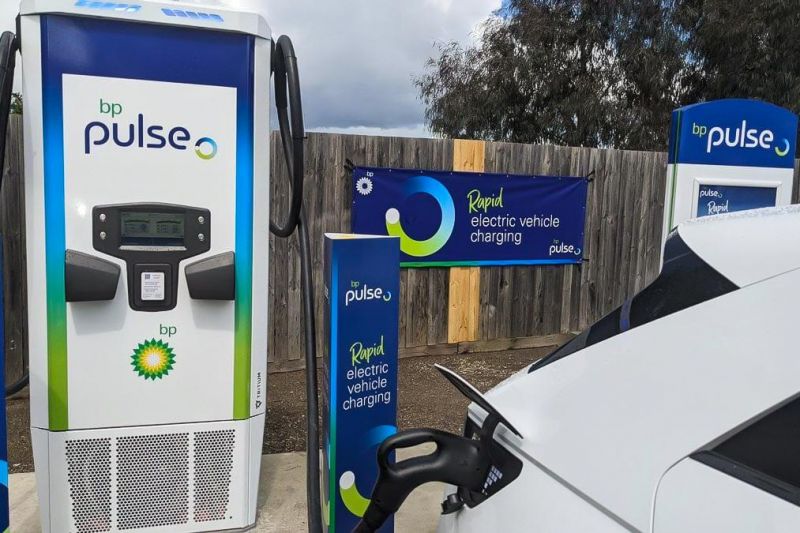Tesla is sharing the Supercharger love, selling US$100 million (A$158 million) worth of its ultra-fast chargers to BP.
It will be the first deployment of the American carmaker’s ultra-fast chargers on an independent network, with the first chargers to be rolled out in 2024.
The 250kW chargers will be branded, installed and operated by BP’s EV charger business, known as BP Pulse, and will be paired with the company’s charge management software Omega.
These will be fitted with Tesla’s Magic Dock, which supports both North American Charging Standard (NACS) and Combined Charging System (CCS) connectors to allow EVs from a wide range of brands to use them.
They’ll be found at not only BP petrol stations, but also BP Pulse’s large-scale Gigahub charging sites and select BP Pulse fleet customer depots.
The chargers will support the Plug and Charge protocol to simplify payments.
It’s part of BP’s goal to invest up to US$1 billion (A$1.58bn) in electric vehicle (EV) charging across the US by 2030.
BP Pulse already has more than 27,000 charge points with the aim to roll out another 100,000 globally by 2030.
It’s focusing on high-demand locations such as airports, major metropolitan areas, and existing BP-owned and operated properties.
The company says almost all its new public charge points are either rapid (>50kW) or ultra-fast (>150kW) units.
“Strengthening the bp pulse network with Tesla’s industry-leading hardware is a major step forward in our ambitions for high speed, open access charging infrastructure in the US and advances our ambition to delivering an exceptional customer experience,” said Richard Bartlett, global CEO of BP Pulse.
“Combined with our vast network of convenience and mobility sites on and off the highway, this collaboration with Tesla will bring fast and reliable charging to EV drivers when and where they need it.”
BP says its five “transition growth engines” – bioenergy, convenience, EV charging, hydrogen, renewables and power – made up around 30 per cent of its total investment in 2022, up from just 3 per cent in 2019.
The BP Pulse division opened its first EV charging site in Australia late in 2022, and currently uses Tritium-supplied chargers with CHAdeMO and CCS plugs capable of charging at up to 75kW.
These are being upgraded to 150kW, and BP Pulse says even more powerful chargers are in its plans for Australia.

